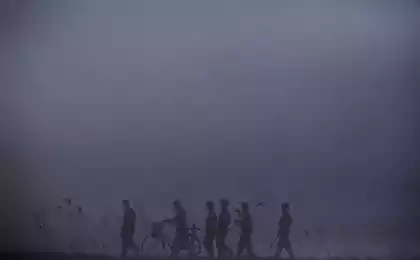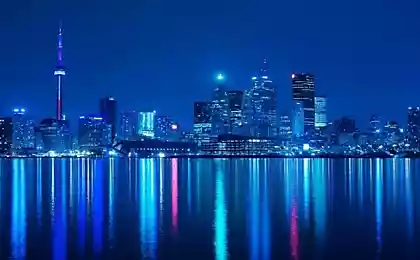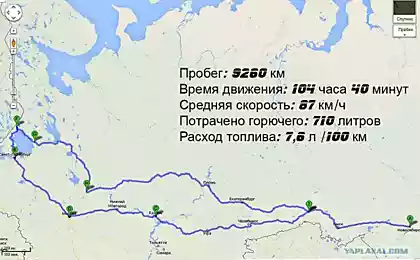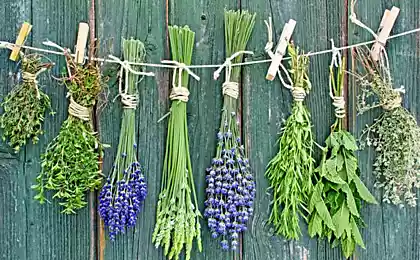1558
Underground city
The idea of underground cities dominates the minds of humanity long ago, she did not just pop up in movies and books, but still most people seem utopian. Meanwhile, in many places in the world such cities are not only created, but even thrive.
Salt Mine in Wieliczka, Poland
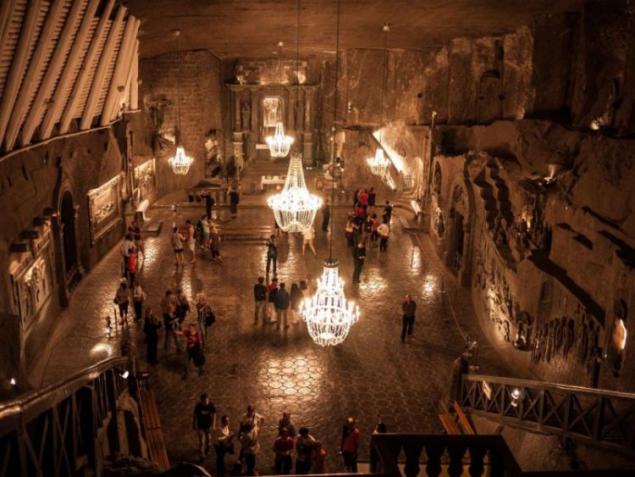
History of the salt mines in Wieliczka town in southern Poland has more than 700 years - mine started to develop in the XIII century and ended only in XX. During this time, the mine has grown to a huge network of corridors and rooms on seven underground levels, the depth of which varies from 57 to 198 meters. The total length of all the passages of the complex is more than 200 kilometers. In this city under the city is not only the streets, corridors, but their monuments, chapels, medical offices and even underground lake. For the first time in order to travel the mine started to use in the XV century, showing her privileged individuals. Tourist routes now include about twenty historic chambers and chapels located in the interior of the complex. Since 1978, the salt mine is on the list of World Heritage Sites, it is visited every year over a million people.
Matmata, Tunisia
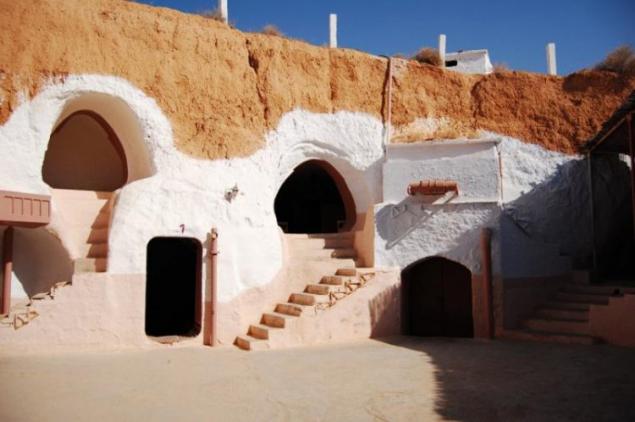
Berberoyazychny small town with a fancy name for us Matmata is located in the south of Tunisia. The main feature of this settlement are his house: part of local residents living in the original dugouts dug in fairly solid ground. Caves that serve as bathrooms, they are connected to each other by corridors, moats. As there was such housing is not known, but according to legend, the first dugout appeared here in the Roman era. The Romans were sent to these lands two Egyptian tribe, giving an area of their complete disposal and allowed to kill anyone who gets in the way. Local residents had to leave their homes and to dig caves in order to save themselves from invaders. Local out of them only at night to fight a guerrilla war with the aliens.
Matmata not enjoyed great fame, while in 1967 as a result of the 22-day heavy rains homes of local residents were not flooded and did not crumble. The authorities sent a letter asking for help, and help residents received - in the city were built terrestrial home. However, many did not want to leave their underground homes and still live there, turning the house into a way of earning. Thus, one of the houses of the city, the hotel "Sidi Driss," received special notoriety after filming an episode of "Star Wars" George Lucas.
Underground City, Montreal, Canada

"Underground City" near Montreal is a huge pedestrian network that connects the underground important city facilities. Its length is about 30 kilometers. "Underground City" united into a whole subway station, more than a hundred shops, about two hundred of restaurants and cafes, a few dozen theaters and even a few theaters in the underground station "Arts Square". Locals use this network as a way to escape the transitions from the summer heat and winter cold and get to your destination without traffic jams, for tourists as "underground city" is a huge attraction. Every day here down about half a million people.
Underground City, Beijing, China
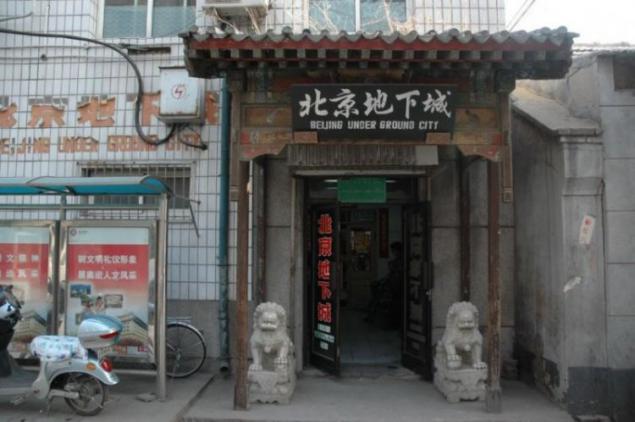
"Underground City" of Beijing as the "underground city" of Montreal, is a network of tunnels dug, with the only difference being that it was built as a great refuge. Construction began in 1969, when the Chinese government to seriously fear of a nuclear war. The area of the underground city is 85 square kilometers, and the length of some tunnels up to 30 km. The entire complex is designed for 300 thousand people. In 2000, part of the underground city was opened for tourists. Composed for them the route passes through the room, where they were to settle the hospital, a cinema and an arsenal. You can also see firsthand the impressive germodver.
Sonnenberg Tunnel, Switzerland
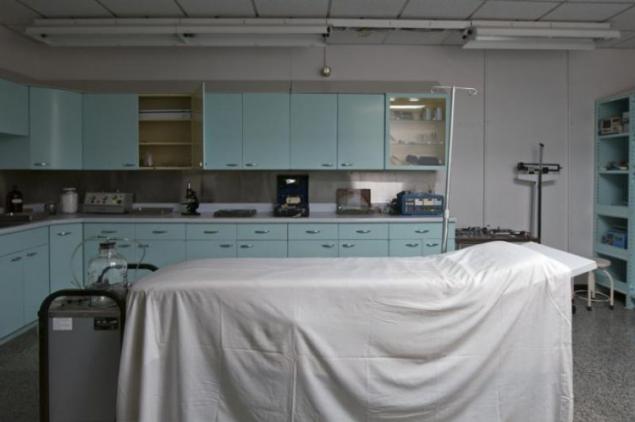
During the Cold War, Switzerland could easily become a battleground between NATO and the Warsaw Pact countries, so wanted to provide at least some security for the population. To do this, close to the city of Lucerne in the period from 1971 to 1976 was built Sonnenberg tunnel. In fact, the shelter is not one, but two tunnels along the highway 1,550 meters in length, each of which can hold up to 10 thousand people in 64 rooms. Between the tunnels created seven passes, which houses a full medical center operating, radio unit and command posts. As planned, the shelter had to withstand megaton nuclear bomb explosion at a distance of a kilometer. The thickness of the gate tunnel is five feet, and the weight of each - 350 tons. However, in 1987, exercises were held, which revealed a number of problems: to close all gates require as much as 24 hours, and the time frame for complete filling of asylum people (20 000) is also not tenable. In 2005 it was decided to eliminate virtually all the military functions of the tunnel because of the high and unnecessary costs for its maintenance, now it's just an underground section of the highway on which passes approximately 55,000 vehicles per day.
Jurong Rock Caverns, Singapore
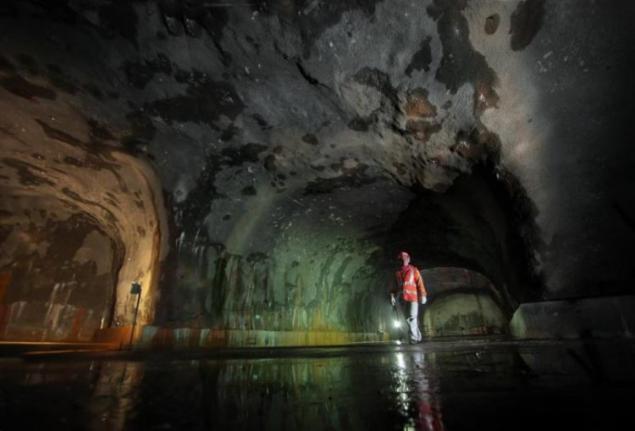
Singapore is one of the major oil centers of the world, and extremely well located at the intersection of many sea routes. Therefore, the city-state has all the prerequisites for becoming a major oil storage destination of the world. However, this optimistic forecast is a downside: we should not forget that the area of Singapore is just over 700 square kilometers, and all that - the island. Thanks to the land reclamation area gradually increases, but this is very expensive and greatly extended in time process. But the solution was found: to create an underground cave complex on Jurong Island. Work on it began in 2007. After the first cycle of the building to hold all stocks will be available for 1, 47 million cubic meters, and after the second - another 1, 32 million, but the second cycle has carefully studied. It is foolish to believe that, having mastered such a huge amount of land, there will not create, at least, all the necessary infrastructure for the survival of people in emergency situations.
Salt Mine in Wieliczka, Poland

History of the salt mines in Wieliczka town in southern Poland has more than 700 years - mine started to develop in the XIII century and ended only in XX. During this time, the mine has grown to a huge network of corridors and rooms on seven underground levels, the depth of which varies from 57 to 198 meters. The total length of all the passages of the complex is more than 200 kilometers. In this city under the city is not only the streets, corridors, but their monuments, chapels, medical offices and even underground lake. For the first time in order to travel the mine started to use in the XV century, showing her privileged individuals. Tourist routes now include about twenty historic chambers and chapels located in the interior of the complex. Since 1978, the salt mine is on the list of World Heritage Sites, it is visited every year over a million people.
Matmata, Tunisia

Berberoyazychny small town with a fancy name for us Matmata is located in the south of Tunisia. The main feature of this settlement are his house: part of local residents living in the original dugouts dug in fairly solid ground. Caves that serve as bathrooms, they are connected to each other by corridors, moats. As there was such housing is not known, but according to legend, the first dugout appeared here in the Roman era. The Romans were sent to these lands two Egyptian tribe, giving an area of their complete disposal and allowed to kill anyone who gets in the way. Local residents had to leave their homes and to dig caves in order to save themselves from invaders. Local out of them only at night to fight a guerrilla war with the aliens.
Matmata not enjoyed great fame, while in 1967 as a result of the 22-day heavy rains homes of local residents were not flooded and did not crumble. The authorities sent a letter asking for help, and help residents received - in the city were built terrestrial home. However, many did not want to leave their underground homes and still live there, turning the house into a way of earning. Thus, one of the houses of the city, the hotel "Sidi Driss," received special notoriety after filming an episode of "Star Wars" George Lucas.
Underground City, Montreal, Canada

"Underground City" near Montreal is a huge pedestrian network that connects the underground important city facilities. Its length is about 30 kilometers. "Underground City" united into a whole subway station, more than a hundred shops, about two hundred of restaurants and cafes, a few dozen theaters and even a few theaters in the underground station "Arts Square". Locals use this network as a way to escape the transitions from the summer heat and winter cold and get to your destination without traffic jams, for tourists as "underground city" is a huge attraction. Every day here down about half a million people.
Underground City, Beijing, China

"Underground City" of Beijing as the "underground city" of Montreal, is a network of tunnels dug, with the only difference being that it was built as a great refuge. Construction began in 1969, when the Chinese government to seriously fear of a nuclear war. The area of the underground city is 85 square kilometers, and the length of some tunnels up to 30 km. The entire complex is designed for 300 thousand people. In 2000, part of the underground city was opened for tourists. Composed for them the route passes through the room, where they were to settle the hospital, a cinema and an arsenal. You can also see firsthand the impressive germodver.
Sonnenberg Tunnel, Switzerland

During the Cold War, Switzerland could easily become a battleground between NATO and the Warsaw Pact countries, so wanted to provide at least some security for the population. To do this, close to the city of Lucerne in the period from 1971 to 1976 was built Sonnenberg tunnel. In fact, the shelter is not one, but two tunnels along the highway 1,550 meters in length, each of which can hold up to 10 thousand people in 64 rooms. Between the tunnels created seven passes, which houses a full medical center operating, radio unit and command posts. As planned, the shelter had to withstand megaton nuclear bomb explosion at a distance of a kilometer. The thickness of the gate tunnel is five feet, and the weight of each - 350 tons. However, in 1987, exercises were held, which revealed a number of problems: to close all gates require as much as 24 hours, and the time frame for complete filling of asylum people (20 000) is also not tenable. In 2005 it was decided to eliminate virtually all the military functions of the tunnel because of the high and unnecessary costs for its maintenance, now it's just an underground section of the highway on which passes approximately 55,000 vehicles per day.
Jurong Rock Caverns, Singapore

Singapore is one of the major oil centers of the world, and extremely well located at the intersection of many sea routes. Therefore, the city-state has all the prerequisites for becoming a major oil storage destination of the world. However, this optimistic forecast is a downside: we should not forget that the area of Singapore is just over 700 square kilometers, and all that - the island. Thanks to the land reclamation area gradually increases, but this is very expensive and greatly extended in time process. But the solution was found: to create an underground cave complex on Jurong Island. Work on it began in 2007. After the first cycle of the building to hold all stocks will be available for 1, 47 million cubic meters, and after the second - another 1, 32 million, but the second cycle has carefully studied. It is foolish to believe that, having mastered such a huge amount of land, there will not create, at least, all the necessary infrastructure for the survival of people in emergency situations.














